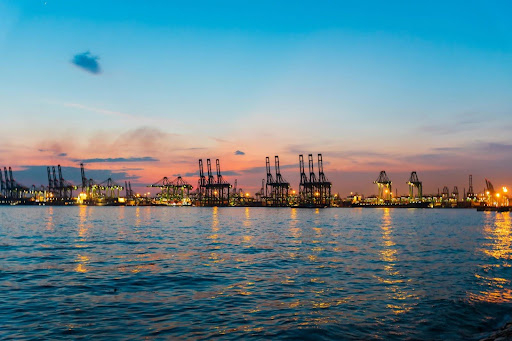
Understanding the shifting landscape of freight in the Asia-Pacific region is crucial in today's complex logistics industry. Dimerco, a leading logistics company with a strong focus on this region, recently released its comprehensive Asia-Pacific Freight Report. To gain a deeper understanding of the report's findings and their implications, we spoke with Kathy Liu, Senior Director of Global Sales & Marketing at Dimerco. Liu shared her expert insights on several pressing issues, including ocean freight rates, geopolitical impacts, and innovative solutions to port congestion.
New Container Ship Deliveries and Ocean Freight Rates
The Asia-Pacific region is witnessing a significant influx of new container ships, with approximately 3 million TEUs (Twenty-Foot Equivalent Units) expected to be added by the end of the year. Despite this substantial increase, Liu notes that there will be no immediate impact on ocean freight rates in the region. However, she anticipates that the long-term effect will be considerable pressure on carriers' pricing strategies, likely resulting in downward trends in freight rates. "The new capacity will inevitably create great pressure on carriers' pricing strategies, driving the rates downward in the long run," Liu explained.
Geopolitical Instability and Strategic Adjustments
The geopolitical instability in the Middle East has prompted significant strategic adjustments among Asia-Pacific carriers, particularly concerning operations between the APAC region and Europe. Liu explains that approximately 500 million TEUs of vessels have been rerouted from the Suez Canal to the Cape of Good Hope. This diversion has increased transit times, and the three major shipping alliances are currently short by 36 vessels, or 9.6% of the capacity needed to maintain their weekly service intervals. As a result, carriers have had to implement blank sailings intermittently to manage the situation effectively.
General Rate Increases and Their Impacts
The recent series of General Rate Increases (GRI) announced by carriers in the APAC region can be attributed primarily to the Red Sea crisis. According to Liu, these rate hikes are likely to impact shipping costs significantly, potentially hindering the Federal Reserve's efforts to control inflation. "The increased shipping costs will mitigate the Fed's efforts in dealing with inflation issues and may delay their initially planned interest rate cuts from September to as late as November," she said. Businesses must brace for these increased costs and adjust their logistics strategies accordingly.
Shifts in Trade Patterns and Sea-Air Routes
Liu highlights a notable shift in trade patterns, with a growing preference for switching from sea to air transport directly, rather than relying on sea-air routes. The unreliability of ocean transit times for long-haul shipments has driven this change. For example, shipping goods by sea to Taiwan, South Korea, and Japan, followed by outbound air transport, is now as costly, if not more so, than direct air transport via China. Additionally, moving goods via Dubai (DXB) has become less viable due to prolonged lead times resulting from the current ocean freight situation.
Addressing Port Congestion in Key APAC Locations
Port congestion remains a critical issue in several key APAC locations, notably Singapore and Port Klang. To address this, carriers have implemented several innovative measures. Liu notes that carriers often skip ports of call where waiting times are excessively long and stop accepting way-port cargoes on long-haul services to reduce berthing times. As a result of this, she recommends building in some additional buffer time to shipments to be sure that deadlines are met.
Dimerco has been proactive in managing these challenges. The company arranges cross-border Full Container Load (FCL) shipments for customers rerouting their Port Klang shipments to Singapore. For purely Singapore-bound customers, Dimerco monitors and arranges deliveries even on weekends if requested. The primary cause of the congestion is vessels arriving off schedule due to supply chain disruptions elsewhere. To alleviate this bottleneck, the Port of Singapore Authority (PSA) has activated idle ports and gantries in the old port complex.
Keeping On Top of Rapid Changes
Dimerco's latest Asia-Pacific Freight Report offers valuable insights into the current and future state of logistics in the region. Kathy Liu's expert commentary highlights the resilience and adaptability of carriers in navigating the complex landscape, from managing geopolitical challenges to implementing innovative solutions for port congestion. As the logistics industry continues to evolve, Dimerco remains at the forefront, ensuring efficient and reliable supply chain solutions for its customers.








